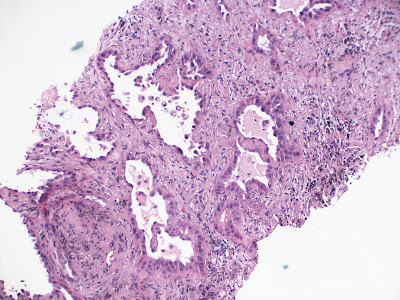Practice question III answers Lung and pleural tumors
Practice question III answers Lung and pleural tumors © Jun Wang, MD, PhD 1. B. Malignant tumors composed of irregular glands lined by atypical cells are adenocarcinoma s . Abscess is characterized by collection of neutrophils and other inflammatory cells in a necrotic background, but do not have glandular growth. Metastatic renal cell carcinoma does not have glandular pattern and is negative for TTF-1. Small cell carcinoma has solid nests of cells with round to oval molding nuclei and scant cytoplasm. Squamous cell carcinoma has squamous differentiation characterized by intercellular bridges and keratin pearls . 2. D. TTF-1 is usually positive in adenocarcinomas of lung. Calretinin and WT-1 are positive for mesothelioma . Chromogranin is a neuroendocrine marker that is expressed in neuroendocrine tumors, including carcinoid , small cell carcinoma , and olfactory neuroblastoma . P63 is a marker for squamous cell differentiation and is positive for squamous cell carcinom
